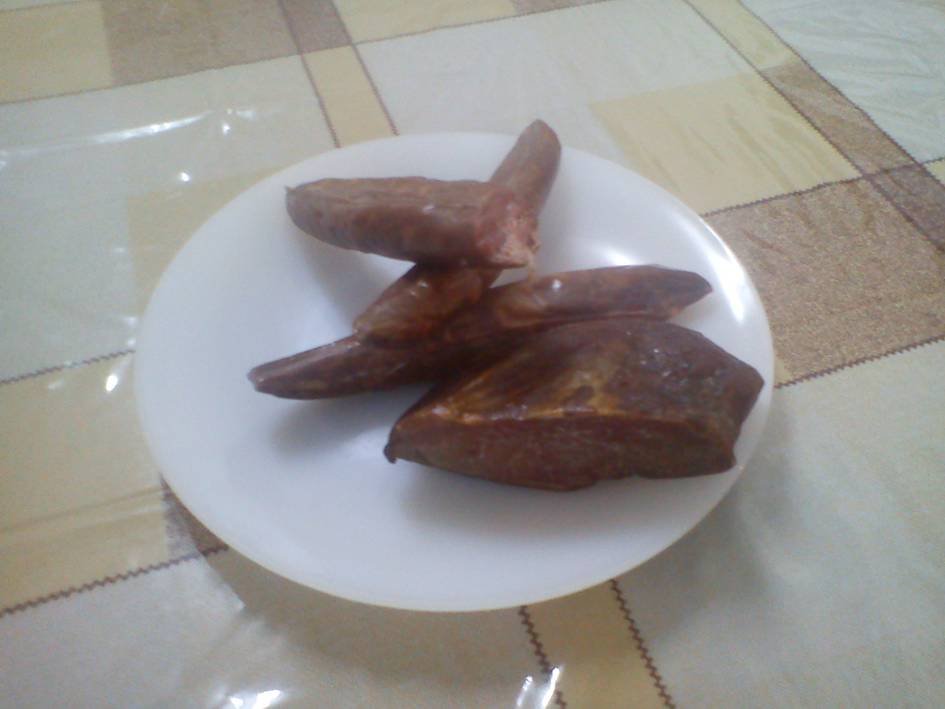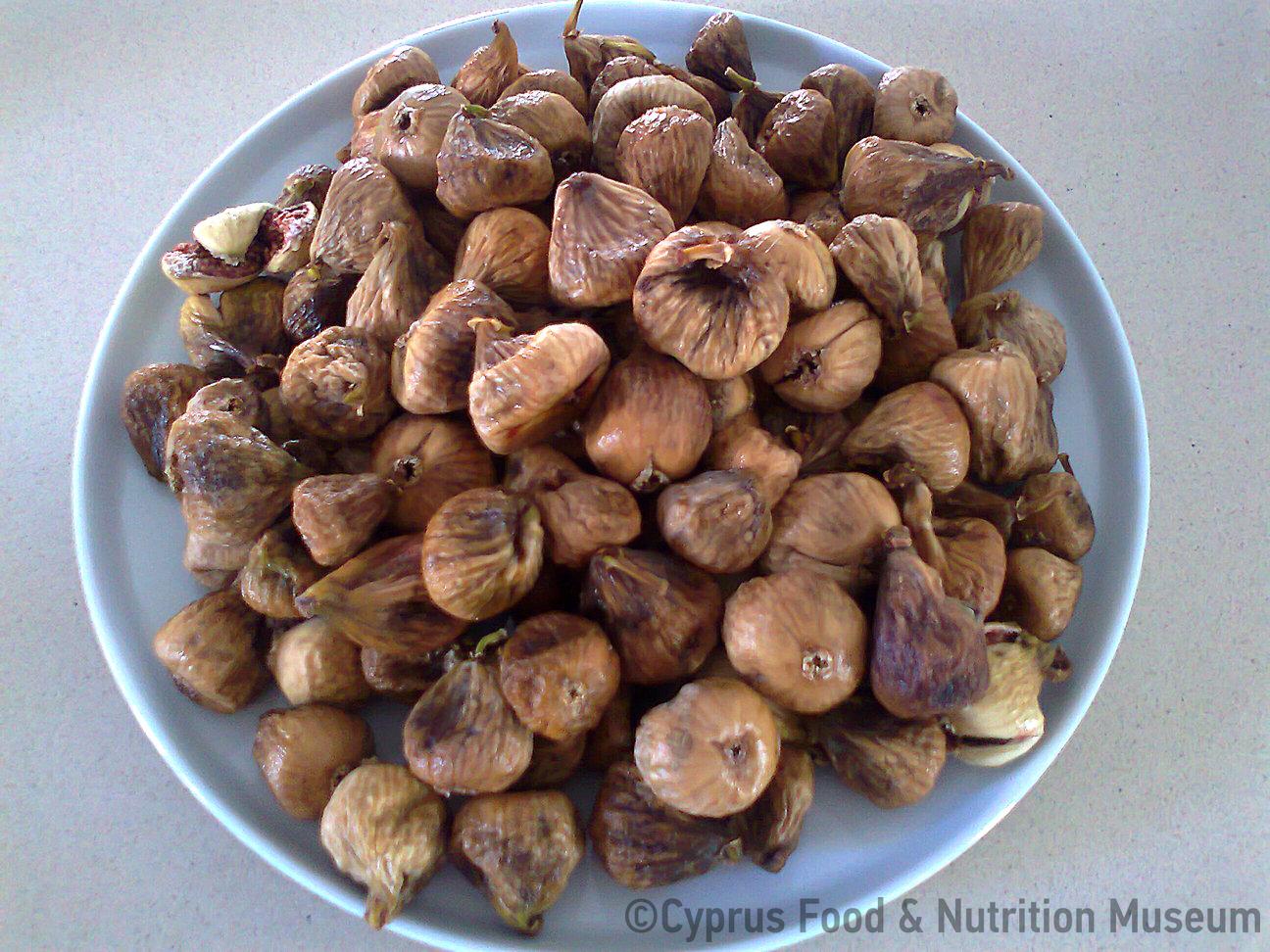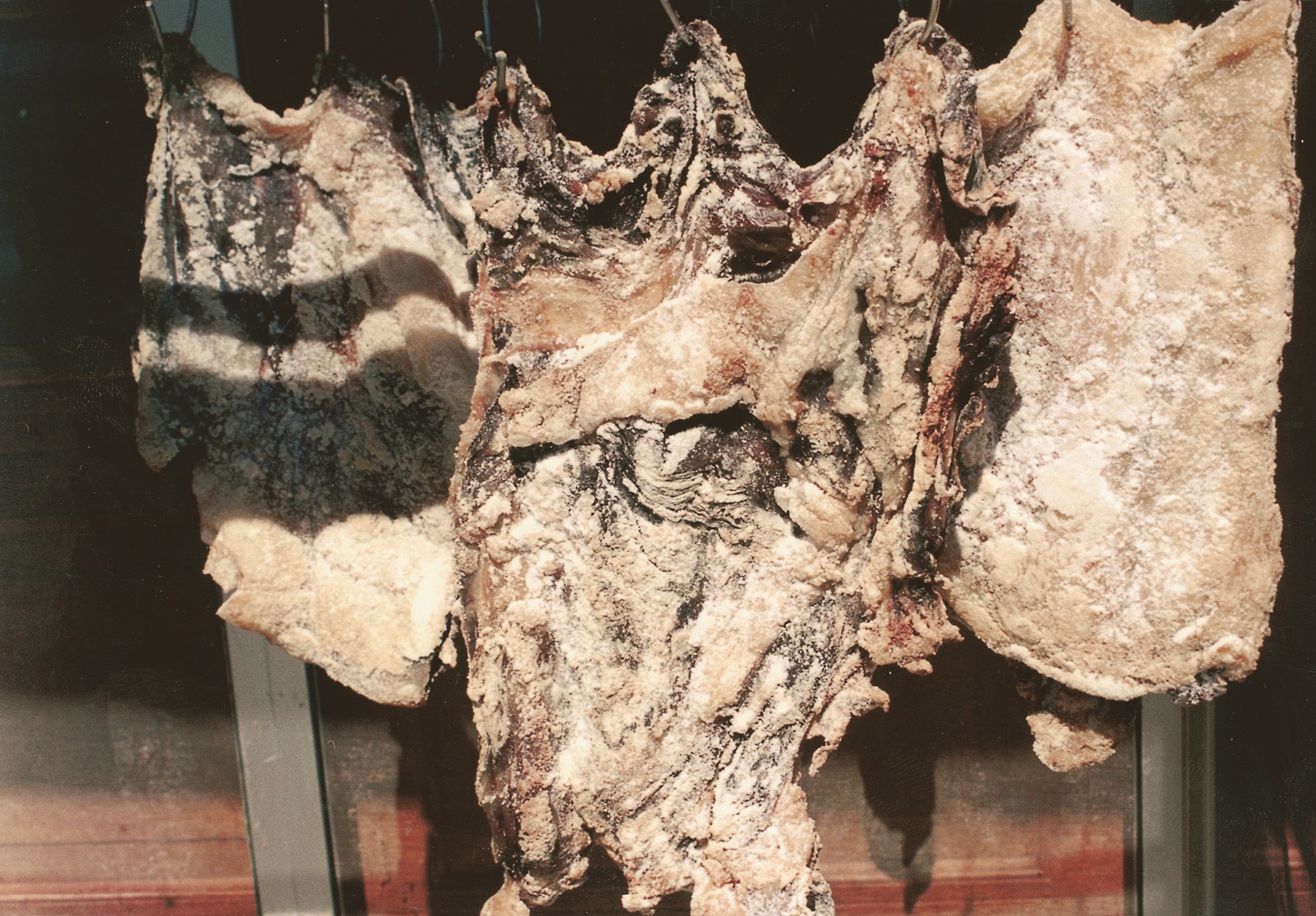Name - Origin
Επεξεργασμένο χοιρινό κρέας.
The name of this type of meat, koumniasta, is due to its storage container, which is called koúmna.
In the West of Cyprus, in the Paphos and Limassol districts, this type of meat was called koumniasta, while in the East of Cyprus, in the Famagusta and Kyrenia districts, it was called pasta(Xioutas P, 1978).
After slaughtering a pig, the rib meat was lightly fried, after having been salted, seasoned with coriander or cumin and marinated in wine for 8 to 15 days. The meat was then stored in a koumna (a small clay pot similar to a small jar) and then covered with milla (fat) in order to be preserved for a long period of time (Neophytou K, 1991).
Functional and symbolic role
Housewives would either fry koumniastas or cook them with potatoes (Xioutas P, 1978).
The use of the milla (fat) preserved the meat for a long time, which was important for Cypriot households, as there was no technology for food preservation and no financial means to buy fresh meat very often.
Meat consumption was customary on Sundays, when Cypriots were not fasting (Xioutas P, 1978).
Additional information and bibliography
Loukanika (Cyprus sausages) were lightly fried and stored in kouzos (clay pot) a long with other cured meat. These were called "koumniasta loukanika" (Xioutas P, 1978).
Neophytou K. (1991) Συντήρηση κρέατος. Λαογραφική Κύπρος, 21 (41), p.p. 63-73.
Xioutas P. (1978), Κυπριακή λαογραφία των ζώων. Publications oft he Centre for Scientific Research, XXXVIII, Nicosia.
Demetra Demetriou


